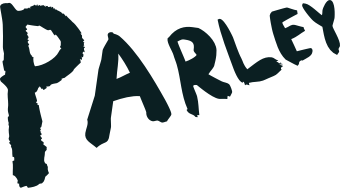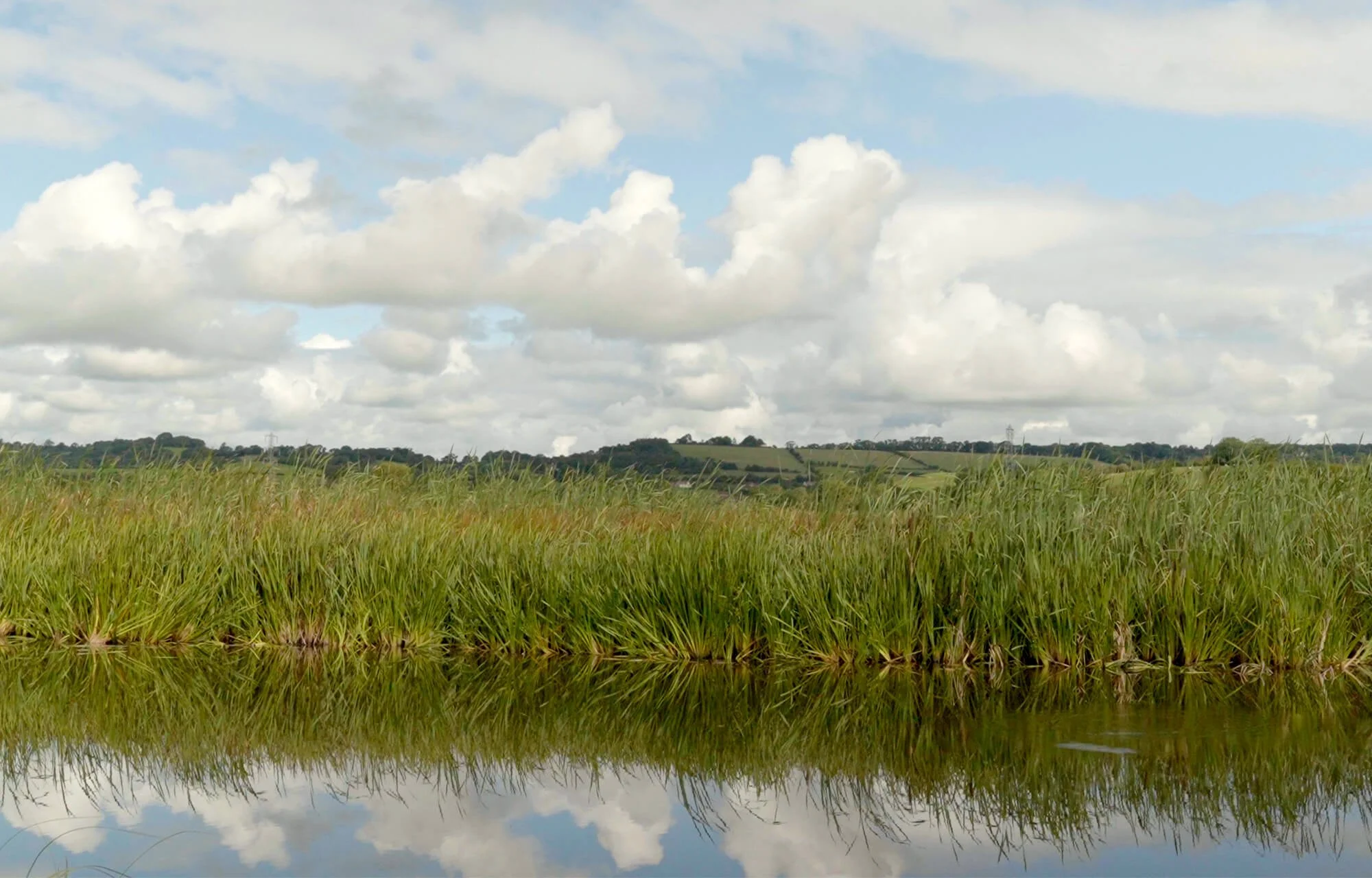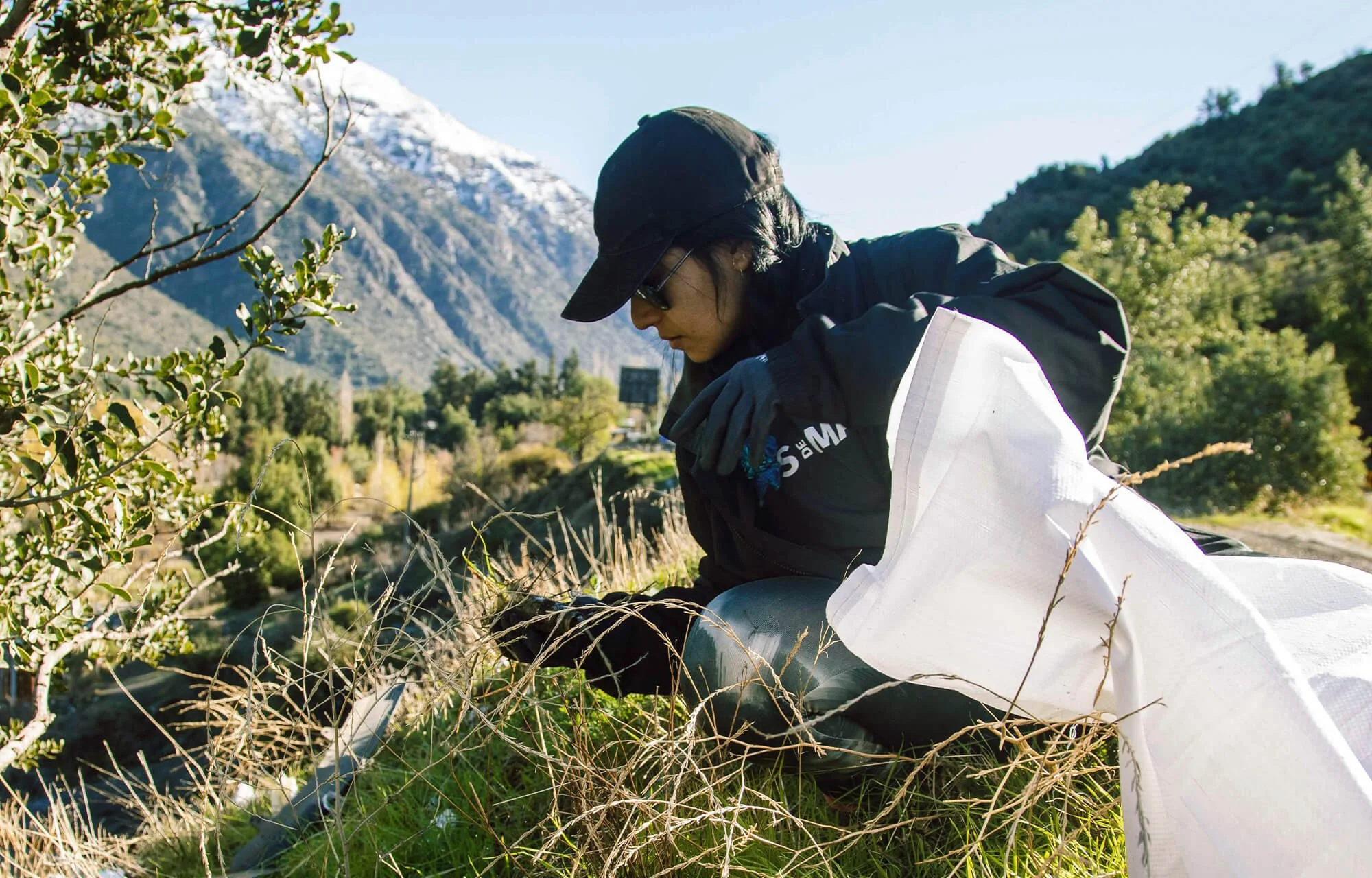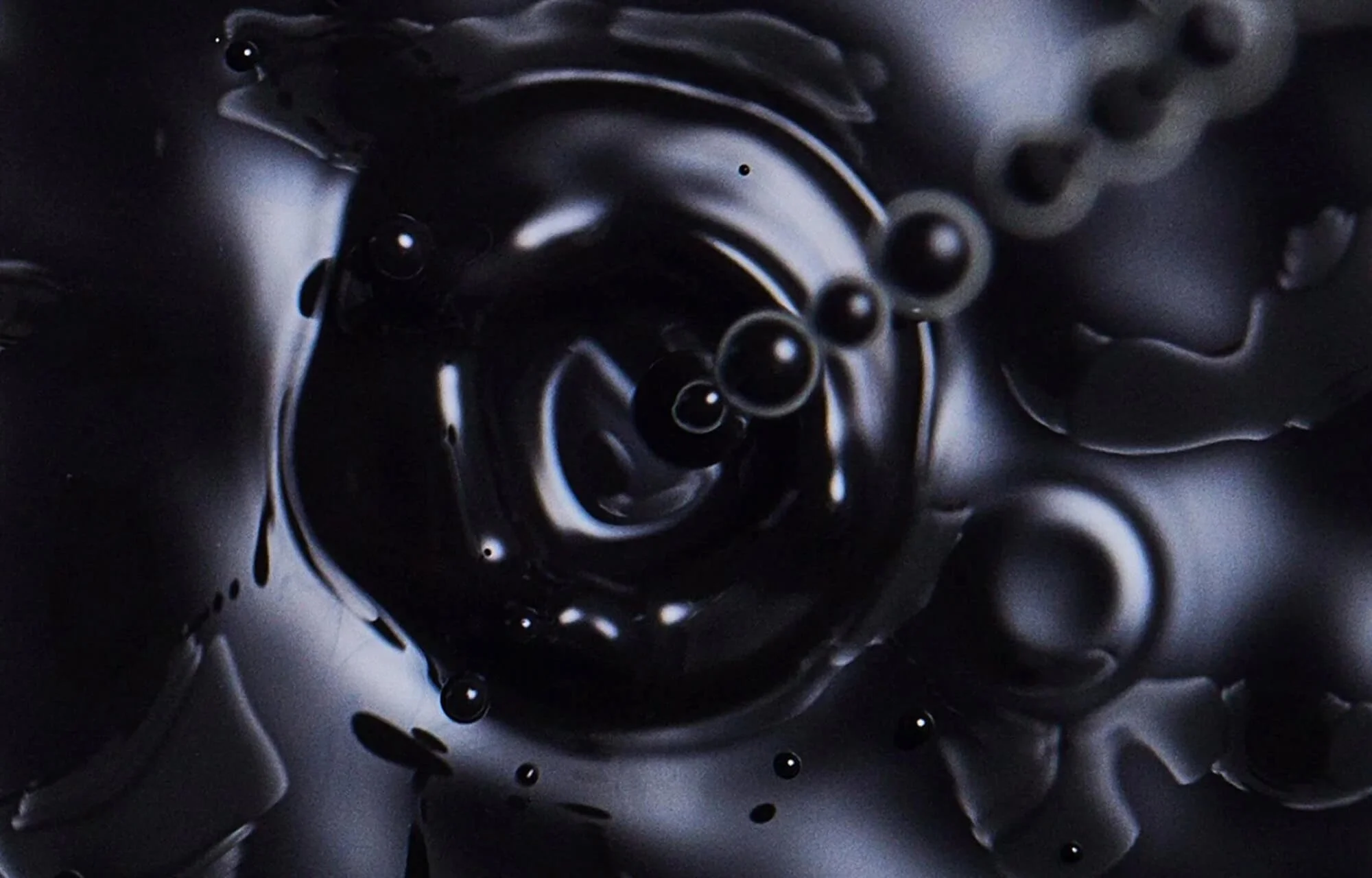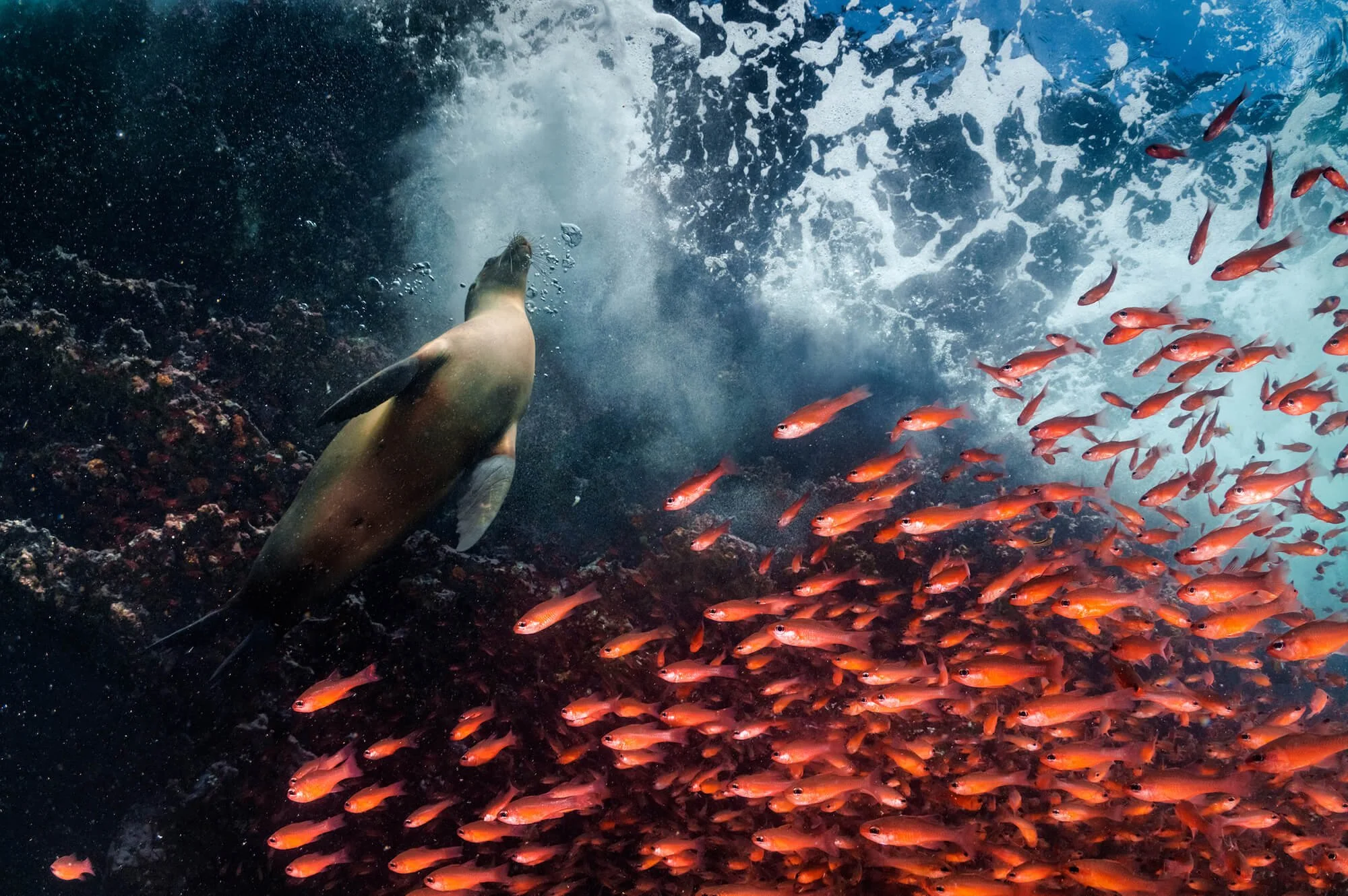How would the world change if we could understand what sperm whales are saying?
We spoke to Project CETI’s Chief Strategy Officer Fiona Korwin-Pawlowski to find out more
In an area of ocean off the coast of Dominica in the Eastern Caribbean, sperm whales are talking to each other. Project CETI’s footage of sperm whale pods communicating in rapid, alien clicks are unintelligible to us, but it’s these recordings that their team are analyzing with the assistance of AI in a bid to understand them. Sperm whales are the loudest animals on Earth, capable of making 230-decibel sounds, louder than jet engines. Project CETI, which describes itself as a “nonprofit organization applying advanced machine learning and state-of-the art gentle robotics to listen to and translate the communication of sperm whales”, is diving headfirst into waters near the island of Dominica to decode the din. It’s an area of expansive biodiversity, terrain that includes nine volcanoes, and an ongoing research project that could shift policy and change protections for sperm whales and other marine creatures.
Fiona Korwin-Pawlowski is Project CETI’s Chief Strategy Officer, someone who’s spent her career working on social justice and climate change initiatives. Her last role was leading grantmaking at Rihanna’s Clara Lionel Foundation, an organization that funds education and climate change programs around the world, before joining Project CETI as a board member in 2020. She’s known that she’s wanted to work in this area since the ninth grade and is passionate about redressing inequality as it pertains to the climate. “Working in the Caribbean since 2010 gave me a clear understanding that the communities and people who are contributing the least to climate change are being affected to most by it,” she tells me.
To find out more about Project CETI’s mission we spoke to Fiona about why she views the work that they do as similar to an art project, the inspiration of the late Roger Payne and why AI, if used correctly, is a tool much like a telescope, that can help us see the universe more clearly.
Project CETI founder Dr. David Gruber
CETI Glider training
Q&A
Could you describe the overall mission of Project CETI and what you think decoding the communication of sperm whales will achieve for our planet?
Project CETI’s scientific mission is to apply advanced machine learning and state-of-the-art gentle robotics to listen to and translate the communication of sperm whales. Our research takes place in the Eastern Caribbean off the island of Dominica, which is known as “The Nature Island” for its expansive biodiversity and terrain that includes nine volcanos.
Our vision is that decoding what whales are saying can contribute impactfully to policy protections for whales and other marine life. CETI’s work is already shifting how we consider animal communication and our human connection to the multitude of other species we share the planet with. By being able to better understand what animals are saying we can take stronger protective actions! We have already started working on how our findings can be applied to policy and have some exciting updates in this area later this year about work we’ve been doing with our primary policy partner at The More Than Human Life (MOTH) Project at New York University’s School of Law. This will include an article in a major law review journal, presentations at Animal Law Conferences, as well as a proposal for ethical guardrails around the usage of AI and animals.
Can you explain in simple terms the work that you do?
To give some context on how CETI works, our non-profit organization serves as an umbrella over the scientific research that is taking place. We grant funds to the CETI science team — leading artificial intelligence/machine learning, natural language processing and complex systems experts, marine biologists, cryptographers, linguists, roboticists, engineers, and underwater acousticians across over ten institutions. A key component is our CETI field team in Dominica who conducts the daily observations and data collection.
I lead strategy and programs at CETI, so I do a little of everything. First, I work with our Founder Dr. David Gruber on the strategic direction of the organization and ensuring our organizational structure, communications and systems support that vision. I also focus on our non-scientific programs such as arts, policy and children initiatives. These programs are the vehicles for how we’re communicating our scientific findings broadly (reaching young people is a huge priority for us so we are excited to kick CETI initiatives for kids in 2025). I also work closely with our lead partner, the National Geographic Society. We collaborate with National Geographic across a number of fronts but are particularly proud to have worked with them to develop the CETI Dominica Marine Conservation Fellowship program, a community-based 10-month multi-module training program for Dominican youth who are interested in marine science and conservation.
You have an incredible resume of varying work within the climate space. With so much experience, what is it specifically about Project CETI that you found attractive as your next move?
I’m grateful to have had a two decade career in the non-profit sector that has brought me to Haiti, Rwanda, Malawi, Senegal, and other beautiful corners of the world. I’ve worked in the climate space in the U.S. and Caribbean since 2016 and my last role leading grantmaking at Rihanna’s Clara Lionel Foundation brought me to Dominica where CETI's work takes place. I am very interested in new models to create substantive change and hearing David’s vision to create an organization that would produce best-in-class science while investing in communications and programs to reach and inspire people really intrigued me. Many science projects historically have been extractive and not grounded in communities where research takes place; David also was determined to ensure that this project was rooted in Dominica and that it was a platform to bring people to the climate and conservation spaces that have been historically excluded from it. I first joined the organization as a Board Member in 2020 to help build the initial non-profit structure and strategy and then in 2022 when I was ready for a new move, it was exciting to join the team as Chief Strategy Officer and build on that engagement.
You've worked in social change and climate spaces for such a large portion of your life. How early did the desire to work in this area emerge and what inspired you to start?
I was inspired early on to engage in these areas. I really resonate with Shirley Chisholm’s quote, “Service is the rent we pay for the privilege of living on this earth.” I went to Quaker school and we had a Peace and Justice class in ninth grade where we were asked to pick a policy issue, research it and write a policy brief. I picked the HIV/AIDS crisis and that assignment highlighted the vast injustices, purposeful exclusion and suppression of rights in our global system. By learning about ACT UP (AIDS Coalition to Unleash Power) and the AIDS Memorial Quilt, I saw how art and community are central to movement building, creating lasting change and reaching people. This experience made me want to work with organizations and initiatives that are taking creative approaches to confronting our world’s biggest challenges and creating new systems. I think that tackling climate change in a way that centers communities and local approaches is critical. Working in the Caribbean since 2010 gave me a clear understanding that the communities and people who are contributing the least to climate change are being affected to most by it. This inspired me to take part in initiatives that focus on elevating local leaders and grassroots organizations fighting the climate crisis.
CETI Core Whale Listening Station 2
“Our vision is that decoding what whales are saying can contribute impactfully to policy protections for whales and other marine life.”
Fiona Korwin-Pawlowski — Chief Strategy Officer, Project CETI
On our call, you talked about approaching Project CETI as an art project, which I thought was really interesting. Could you expand on that?
CETI is highly experimental and has a life of its own — the level of interdisciplinary and coordination across institutions is unique and challenges so many norms within science as well as culture. It feels more like a collective — there are so many facets working together at once. We are, as art does, trying to create new dialogues and challenge the status quo whether it’s creating suction cups inspired by nature or pairing linguists with roboticists. CETI is also led by scientists with deep expertise in animal behavior; an important facet that the whales are at the core, rather than the research being led by technology. There are so many ways to approach climate and conservation work. CETI’s approach is to start by shifting perspectives and helping foster a connection to nature. This is our offering.
We’re also committed to literally integrating CETI’s findings with art — a portion of our footage of the whales we study was recently featured in Joan Jonas’ retrospective Good Night, Good Morning. CETI was a part of the New York City exhibition Who Speaks for the Oceans? and we’re pursuing unique artistic collaborations like our recent partnership with D.S. & Durga to create a CETI-inspired fragrance. Coming up next month, we’re taking part in Pioneer Works’ Press Play Fair in New York City with our partner the Interspecies Library. Our arts-related work is also taking place in Dominica where we’re partnering with the Waitukubuli Artist Association.
CETI team members Stephanie Gil, Sushmita Bhattacharya and Ninad Jadhav
“What do they think about, do they dream, how do they think about the ocean, what do they experience on their deep dives?”
Fiona Korwin-Pawlowski — Chief Strategy Officer, Project CETI
What would you say to a sperm whale if you could, and what do you think it would say to you?
I would prefer to hear what they have to say! I think a whale might share some grievances with humans (so many to pick from, like turning down the ocean noise). I would want to hear all of those but also really would love to ask what their world feels like to them. What do they think about, do they dream, how do they think about the ocean, what do they experience on their deep dives? I would want to understand our collective world from their perspective. We’re actually about to launch a campaign called Listen to the Whales and we’re very excited to hear others’ answers to this question! And, the CETI Theoretical Analysis team (led by Dr. Shafi Goldwasser) is pioneering research that explores parameters for alternatives to “playback” that allow us to validate our understanding of what they are saying purely by listening.
How do you think that humanity being aware of animals communicating in a language could alter people's perception of nature and how necessary it is to protect it?
In the late 1960s, scientists, including the late Dr. Roger Payne, who was a principal advisor of CETI, discovered that whales sing to one another. His recordings, Songs of the Humpback Whale, sparked the “Save the Whales” movement, one of the most successful conservation initiatives in history. The campaign eventually led to the Marine Mammal Protection Act that marked the end of large-scale whaling and saved several whale populations from extinction. If all this could happen by just hearing the sounds of whales it feels like the possibilities are endless if we could actually understand them. In his final note in Time in June 2023, Roger closed with: “It’s time for us to once again listen to the whales — and, this time, to do it with every bit of empathy and ingenuity we can muster so that we might possibly understand them.”
You speak about this work potentially opening up the possibility of communication with extraterrestrials...is that a major incentive for Project CETI?
Right now at CETI we’re just focused on whales! But the idea is that the systems we’ve built at CETI can be used to translate any other species… including extraterrestrials if we are ever to encounter them. So until that happens, we are an inter-terrestrial initiative!
Realistically, given the trajectory that you're on at the moment, how long do you think it might be until we can understand what they're saying to each other?
It’s all how you define understanding! We have already discovered some of the fundamentals of sperm whale communication: that they possess vowels and diphthongs and a phonetic alphabet. Our science team’s findings in Nature Communications have revealed that sperm whale communication has both contextual and combinatorial structure not previously observed in whale communication and released a variety of other publications of our other findings so far. We are just beginning to pair their vocalizations with behaviors, such as when they dive. We also have exciting results upcoming about the network of whales who assisted at a whale birth our team witnessed last summer. For more details, see Elizabeth Kolbert’s narrative in The New Yorker and their corresponding video. We're excited to continue our research and dive further; Ross Andersen from The Atlantic posed interesting questions about what first contact might look like. Stepping back, it’s important to recognize that indigenous people around the world have been listening to and understanding animals that have existed for millenia. Al combined with bioacoustics is purely a new tool (like a telescope) that, if used with care, can possibly offer new insights and deepen our connection to the more than human world all around us.
Yaniv Aluma and Odel Harve diving with Whale Recording Unit
CETI Harvard Labs Drone testing
Photos courtesy of Amanda Cotton, Stu Rosner, Elias Carlson, and Project CETI
